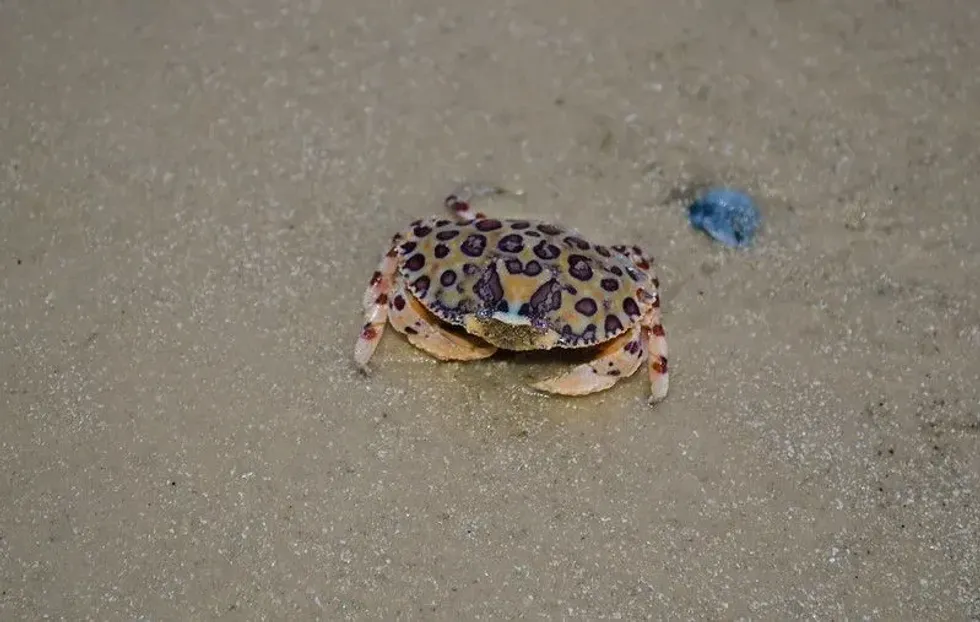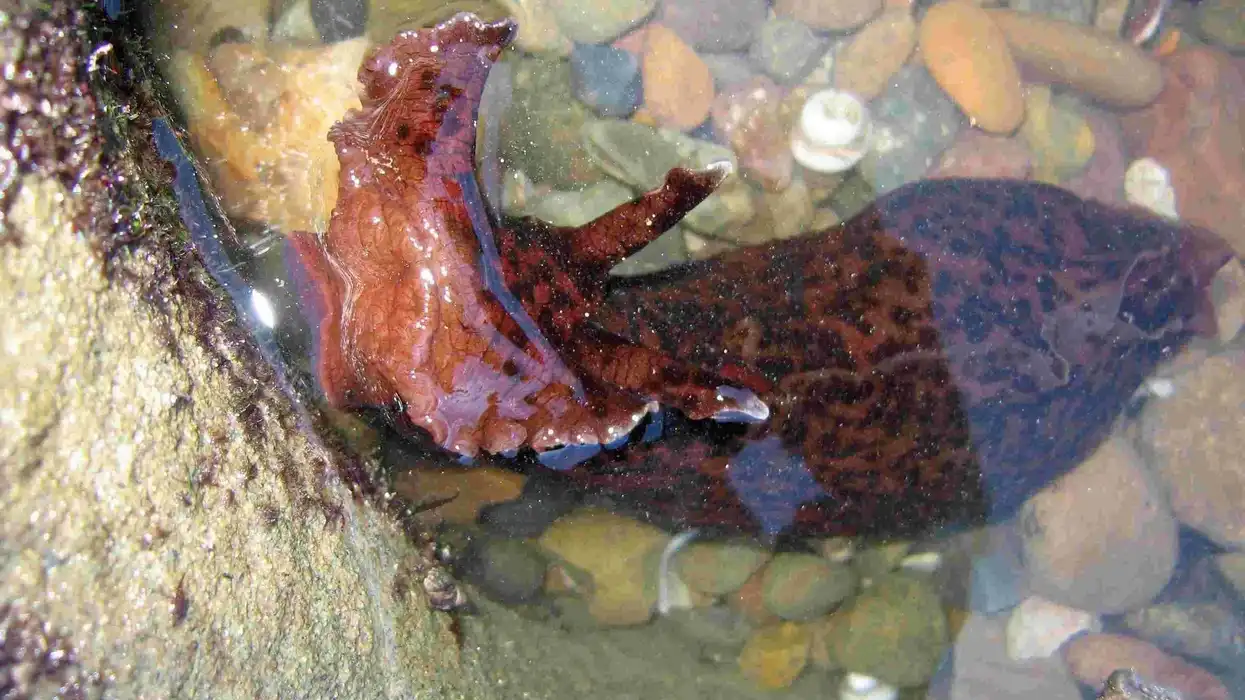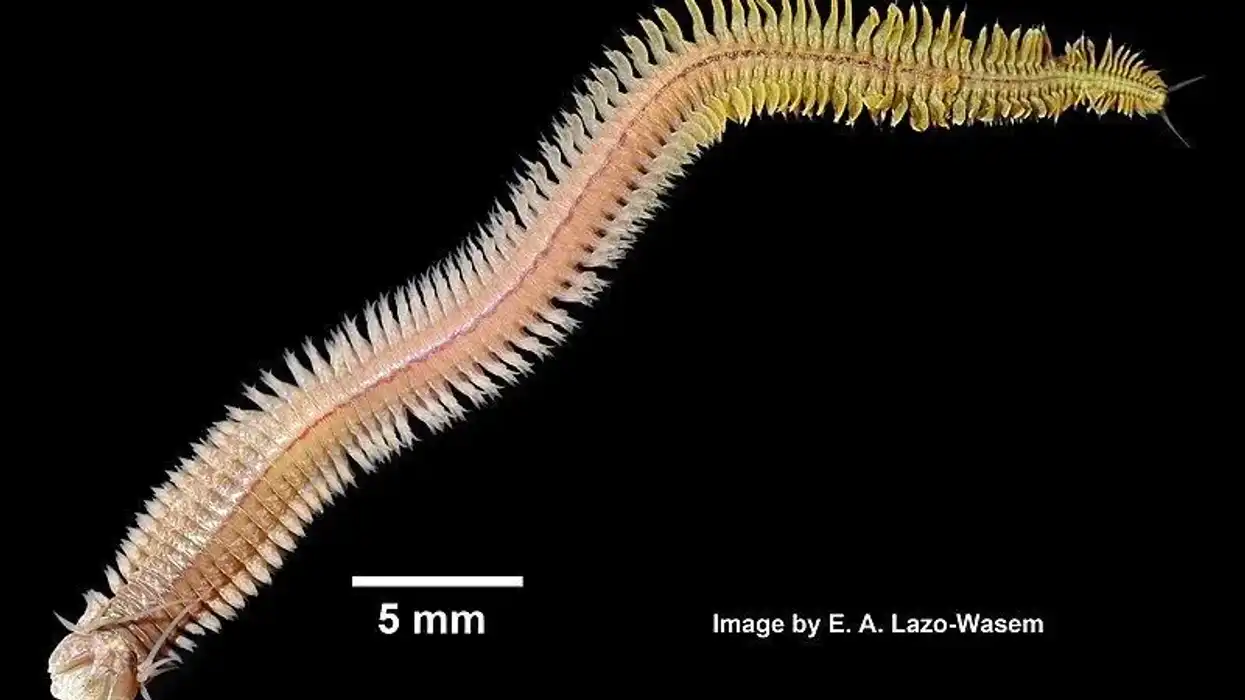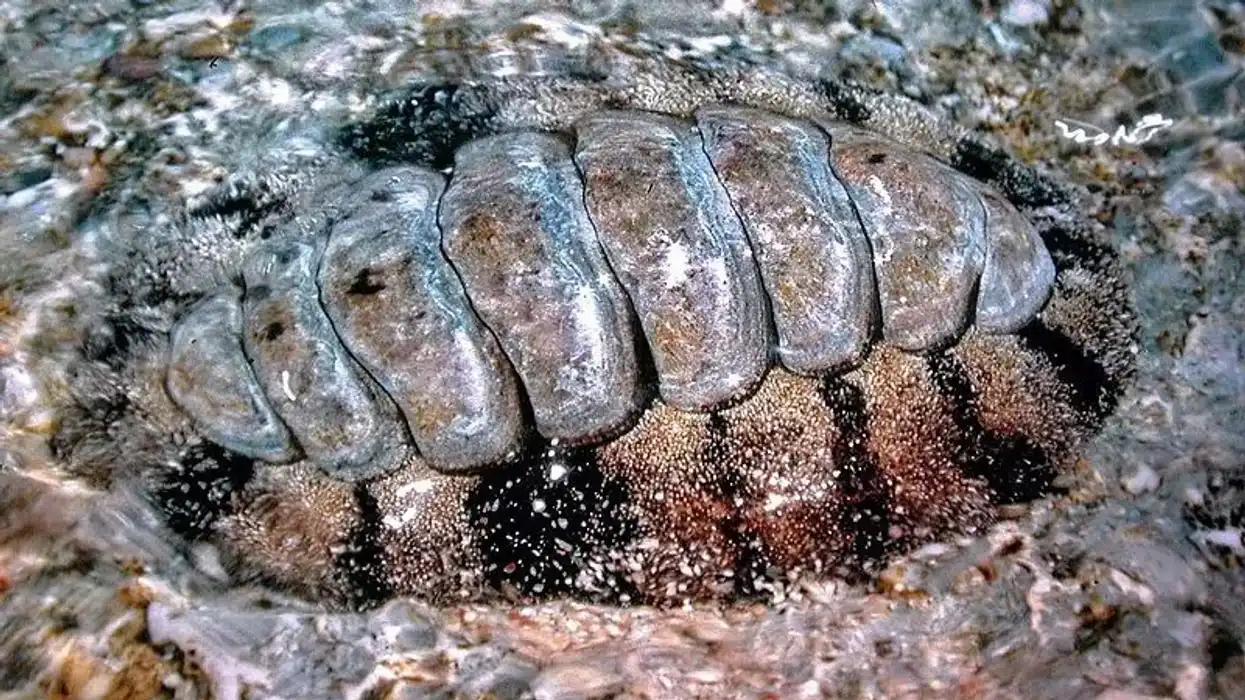The calico crab or the shy-face crab is a native of the western Atlantic Ocean and is found in a wide range of places around the world.
Characterized by its colorful and very beautifully patterned carapace, the calico crab is known by many names such as the box crab, the leopard crab and the shame-faced crab.
Many of these names stem from the fact that during the day, nothing but the eyes of these creatures are visible above sand. Furthermore, their shell is placed in such a way that the crab's face is always guarded. Keep reading to know more facts about calico crabs.
Calico Crab Interesting Facts
What type of animal is a calico crab?
As the name suggests, the calico crab (Hepatus epheliticus) is a type of crab which is characterized by its shy nature and adorable shell.
What class of animal does a calico crab belong to?
In scientific terms, the name of the class to which the calico box crab belongs is known as Malacostraca. However, it can conveniently be classified as a true crab as well.
How many calico crabs are there in the world?
There are no definitive figures which can tell us about the population of calico crabs in the world. This has led many people into assuming that the species is safe and that its population count is not set to see any major decline in the coming years.
Where does a calico crab live?
The calico crab (Hepatus epheliticus) or the calico box crab prefers to bury itself in the sand in the daytime. In the daytime, you will be able to spot nothing but the eyes of this shy crab species.
However, in the nighttime, these invertebrates come out in the open in order to search for worms, fish, and other food items. These crabs often wash up on the shores of Georgia, where they occur in large numbers.
What is a calico crab's habitat?
The habitat range of the calico crab (Hepatus epheliticus) runs along Chesapeake Bay, Jamaica, and the Gulf of Mexico. In these regions, the calico crab would either be found buried in the sand or offshore. They are especially common in the western Atlantic Ocean.
Who do calico crabs live with?
Unfortunately, there is no conclusive evidence to tell us about the family values that these crabs have. However, their shy and reserved nature does not uphold a very sociable trait.
How long does a calico crab live?
Unfortunately, there are no records to show us how many years a calico crab can live.
How do they reproduce?
The calico crab (Hepatus epheliticus) is an invertebrate that reproduces through laying eggs. This oviparous crab species reproduces in the summer season and eggs are looked after by the female calico crab until hatching. The immature calico crab is planktonic in nature and goes through many changes whilst under sea level.
What is their conservation status?
The IUCN Red List does not give the calico box crab a legal status. This has led many people into believing that calico crab adaptations have allowed the species to be able to survive in large numbers. Assumably, the calico crab population is high and these beautiful invertebrates will be around for a long time.
Calico Crab Fun Facts
What do calico crabs look like?
The most striking feature of a calico box crab is its carapace and the pattern on it. On top of the shell, the box crab (calico) has patterns in white and red or brown. The carapace is fairly round in shape and gives these invertebrates the cutest appearance.
Like most other crab species, calico crabs also have four legs and two claws on the front legs. These claws help them in finding food and digging up holes to rest in during the daytime.
How cute are they?
The beautifully patterned carapace and tiny claws do make the calico crab (Hepatus epheliticus) a very cute species to look at. The way they have nothing but their eyes sticking out of the sand in the daytime is also very adorable.
How do they communicate?
This member of the crab family presumably communicates in the same way as other crabs. Crabs typically communicate by clinking their claws, legs, and other body parts. Since their bodies are made of shell, the sound created is adequately loud.
How big is a calico crab?
The size range of the calico box crab (Hepatus epheliticus) is quite small. It can grow to be up to 3 in (7.6 cm) long.
How fast can a calico crab move?
Unfortunately, there is not much evidence to tell us how fast these natives of the western Atlantic Ocean can move.
How much does a calico crab weigh?
There is a lack of scientific research in terms of the physical characteristics of the crab. One of the many things that we do not know about these stunning invertebrates is their weight range.
What are male and female names of the species?
There are no special names for male and female calico box crabs. However, we generally refer to a male crab as Jimmy and a female one as Jenny. The same can be applied in the case of these sand-loving creatures as well.
One other thing to note here is that females and males of this species are quite different. In order to understand whether the crab is male or female, you will have to look under its carapace. A narrow abdomen means that the crab is a male since females typically have broad abdomens.
What would you call a baby calico crab?
There are no special names for baby calico box crabs.
What do they eat?
These natives of the western Atlantic Ocean are insectivorous in nature. They hunt for food in the nighttime and stay shielded by sandy beaches in the daytime. The calico crab diet consists of worms, fish, and other invertebrates.
Are they dangerous?
While the calico crab description can scare people because of the mention of claws, these crabs are actually not very dangerous. They are timid in nature, which is why they spend all summer and winter trying to use sandy beaches as their shield.
Would they make a good pet?
Understandably, the patterned carapace and shy-looking face of the calico box crab can make anyone want to adopt the creature. While it is not common practice to have this sea creature as a pet, it wouldn't be the worst idea either.
One of the positive things in this regard is that calico box crab care is fairly simple once the right water conditions have been achieved.
Did you know...
Sea turtles are one of the greatest predators of calico crabs.
The range of habitat that this creature enjoys runs along the western Atlantic Ocean.
The calico crab only hunts for food at nighttime.
How did the calico crab get its name?
The calico crab gets its name from the tri-colored pattern on its carapace. The carapace is white in color, with red or brown spots which are outlined in a slightly darker shade.
Are calico crabs edible?
Many organizations declare calico crab edible. They have a taste profile which is quite similar to that of the blue craw crab and can be cooked in a number of different ways. This crab often washes up on the shores of Georgia and is eaten by people there.
*Thank you to Kidadler Jan Earl for providing the image of a Calico Crab in this article.









